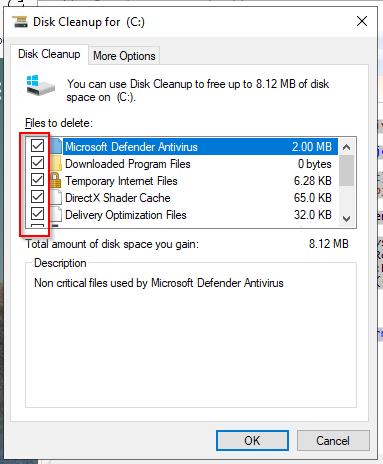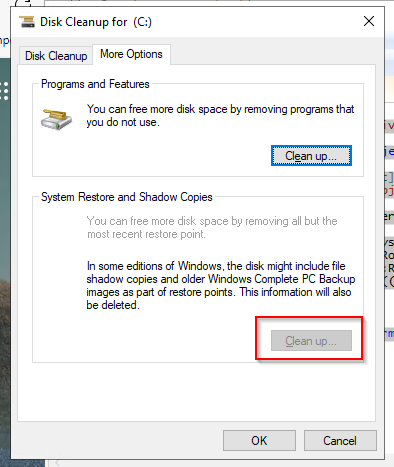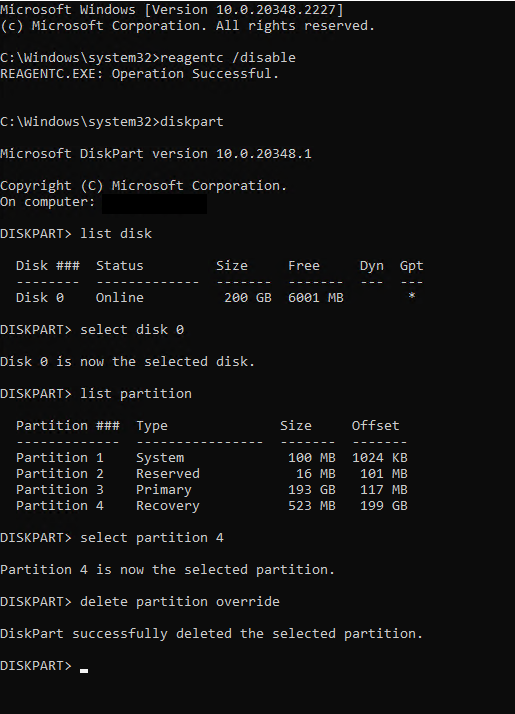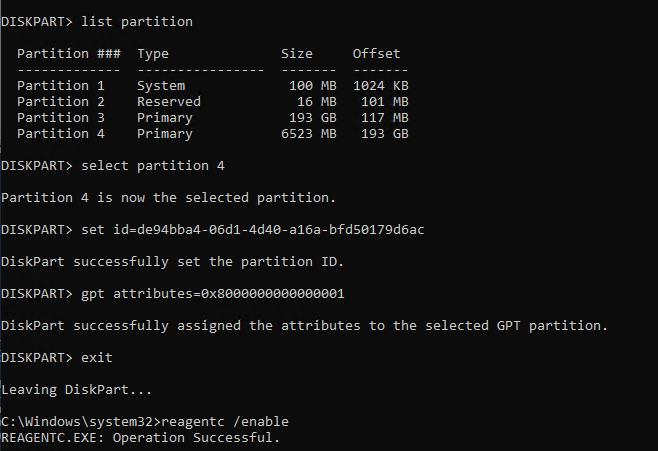
by David | Feb 19, 2024 | Deployments, Information Technology, Resources
Reading Time: 6 minutes
A few weeks ago, we built WordPress in Docker. Today I want to go deeper into the world of docker. We will be working with a single WordPress instance, but we will be able to expand this setup beyond what is currently there over time. Unlike last time we will be self-containerizing everything and adding plugins along with the LDAP php which doesn’t natively come with the WordPress:Latest image. It’s time to build an WordPress in Docker with LDAP.
Docker Files
As we all know docker uses compose.yml files for it’s base configuration. This file processes the requested image based on the instructions in the compose. Last time we saw that we could mount the wp-content to our local file system to edit accordingly. The compose handles that. This time we are going about it a little differently. The compose file handles the configuration of basic items like mounting, volumes, networks, and more. However, it can’t really do much in the line of editing a docker image or adding to it. The compose file has the ability to call upon a build command.
services:
sitename_wp:
build:
context: .
dockerfile: dockerfile
The build is always within the service that you want to work with. the Context here is the path of the build. This is useful if you have the build files somewhere else like a share. Then the dockerfile will be the name of the build. I kept it simple and went with docker file. This means there are now two files. the docker-compose.yml and this dockerfile.
What are the Dockerfile
The docker file takes an image and builds it out. It has some limitations. The dockerfile can add additional layers that adds to the over all size of the image. Non-persistence is the next problem, by it’s ephemeral nature, it disappears after it’s first use. The file can only do a single threaded execution. Thus, it can’t handle multiple things at once. It’s very liner in it’s nature. If than, and other structures are not present in the docker file. This makes it hard for it to be a programing language. There are limits to versioning.
The docker file cannot work with networking or ports. There is no user management inside the dockerfile process. Complexity is a big problem with these files as the more complex, the harder it is to maintain. Never handle passwords inside the dockerfile. The docker file can’t handle environmental variables. The thing that hit me the hardest, limited apt-get/yum commands. Build context is important as dockerfiles can slow down performance. Finally, dockerfile’s may not work on all hosts.
With those items out of the way, docker files can do a lot of other good things like layering additional items to a docker image. The container treats these files as root and runs them during the build. This means you can install programs, move things around and more. It’s time to look at our dockerfile for our WordPress in Docker with LDAP.
The Dockerfile
# Use the official WordPress image as a parent image
FROM wordpress:latest
# Update package list and install dependencies
RUN apt-get update && \
apt-get install -y \
git \
nano \
wget \
libldap2-dev
# Configure and install PHP extensions
RUN docker-php-ext-configure ldap --with-libdir=lib/x86_64-linux-gnu/ && \
docker-php-ext-install ldap
# Clean up
RUN rm -rf /var/lib/apt/lists/*
# Clone the authLdap plugin from GitHub
RUN git clone https://github.com/heiglandreas/authLdap.git /var/www/html/wp-content/plugins/authLdap
# Add custom PHP configuration
RUN echo 'file_uploads = On\n\
memory_limit = 8000M\n\
upload_max_filesize = 8000M\n\
post_max_size = 9000M\n\
max_execution_time = 600' > /usr/local/etc/php/conf.d/uploads.ini
The Breakdown
Right off the bat, our FROM calls down the wordpress:latest image. This is the image we will be using. This is our base layer. Then we want to RUN our first command. Run commands like to have the same commands. Remember, every command is ran as the container’s root. The first RUN command will contain two commands. The APT-Get Update and the install. We are installing git, this way we can grab a plugin, nano, so we can edit files, wget, for future use and our php ldap.
apt-get update &&\
apt-get install -y git nano wget libldap2-dev
Please notice the && \. The \ means to treat the next line as part of this command. The && means and. The && allows you to run mulitple commands on the same line. Since each RUN is a single line, this is very important. The libldap2-dev is our ldap plugin for php. Our next RUN edits the docker php extension.
The Run Commands
RUN docker-php-ext-configure ldap --with-libdir=lib/x86_64-linux-gnu/ && \
docker-php-ext-install ldap
docker-php-ext- * is a built in scripts to our WordPress image. We tell the configure where our new libraries are located for the PHP. Then we tell php to install the ldap plugin. After we have it installed, we need to do some clean up with the next RUN command.
rm -rf /var/lib/apt/lists/*
At this point, we have WordPress in Docker with LDAP php modules. Now I want a cheap easy to use plugin for the ldap. I like the authldap plugin. We will use the git command that we installed above and clone the repo for this plugin. Then drop that lpugin into the WordPress plugin folder. This is our next RUN command.
git clone https://github.com/heiglandreas/authLdap.git /var/www/html/wp-content/plugins/authLdap
In our previous blog, we used a printf command to make a upload.ini file. Well, we don’t need that. You can do this here. We trigger our final RUN command. This time it will be echo. Echo just says stuff. So we echo all the PHP settings into our uploads.ini within the image.
# Add custom PHP configuration
RUN echo 'file_uploads = On\n\
memory_limit = 8000M\n\
upload_max_filesize = 8000M\n\
post_max_size = 9000M\n\
max_execution_time = 600' > /usr/local/etc/php/conf.d/uploads.ini
Docker Compose
Now we have our Dockerfile built out. It’s time to build out our new docker compose file. Here is the compose file for you to read.
version: '3.8'
services:
sitename_wp:
build:
context: .
dockerfile: dockerfile
ports:
- "8881:80"
- "8882:443"
environment:
WORDPRESS_DB_HOST: sitename_db:3306
WORDPRESS_DB_USER: ${WORDPRESS_DB_USER}
WORDPRESS_DB_PASSWORD: ${WORDPRESS_DB_PASSWORD}
WORDPRESS_DB_NAME: ${MYSQL_DATABASE}
WORDPRESS_AUTH_KEY: ${WORDPRESS_AUTH_KEY}
WORDPRESS_SECURE_AUTH_KEY: ${WORDPRESS_SECURE_AUTH_KEY}
WORDPRESS_LOGGED_IN_KEY: ${WORDPRESS_LOGGED_IN_KEY}
WORDPRESS_NONCE_KEY: ${WORDPRESS_NONCE_KEY}
WORDPRESS_AUTH_SALT: ${WORDPRESS_AUTH_SALT}
WORDPRESS_SECURE_AUTH_SALT: ${WORDPRESS_SECURE_AUTH_SALT}
WORDPRESS_LOGGED_IN_SALT: ${WORDPRESS_LOGGED_IN_SALT}
WORDPRESS_NONCE_SALT: ${WORDPRESS_NONCE_SALT}
volumes:
- sitename_wp_data:/var/www/html
depends_on:
- sitename_db
networks:
- sitename_net_wp
sitename_db:
image: mysql:5.7
volumes:
- sitename_wp_db:/var/lib/mysql
environment:
MYSQL_ROOT_PASSWORD: ${MYSQL_ROOT_PASSWORD}
MYSQL_DATABASE: ${MYSQL_DATABASE}
MYSQL_USER: ${MYSQL_USER}
MYSQL_PASSWORD: ${MYSQL_PASSWORD}
networks:
- sitename_net_wp
networks:
sitename_net_wp:
driver: bridge
volumes:
sitename_wp_data:
sitename_wp_db:
The WordPress in Docker with LDAP breakdown
First thing first, Notice everywhere you see the name “sitename”. To use this docker correctly, one must replace that information. This will allow you to build multiple sites within their own containers, networks and more. As stated before, the first thing we come accross is the build area. This is where we tell teh system where our dockerfile lives. Context is the path to the file in question and dockerfile is the file above.
Next, is the ports. We are working with port 8881:80. This is where you choose the ports that you want. The first number is the port your system will reach out to, the second number is the port that your container will understand. Our SSL port is 8882 which is the standard 443 on the containers side.
ports:
- "8881:80"
- "8882:443"
Next are the enviromental veriables. If you notice, some of the items have ${codename} instead of data. These are veriables that will pull the data externally. This approach prevents embedding the codes inside the compose file. The volume is the next part of this code. Instead of giving a physical location, we are giving it a volume. Which we will declare later. Next, we state the wordpress page is dependant on the mysql image. Finally, we select a network to tie this container to. The process is the same for the database side.
Finally, we declare our network with the networks. This network will have it’s own unique name, as you see the sitename is within the network name. We set this network to bridge, allowing access from the outside world. Finally we declare our volumes as well.
The hidden enviromental file
The next file is the enviromental file. For every ${codename} inside the docker, we need an envorimental veriable to match it. Some special notes about the salts for WordPress. The unique symbols, such as a $ or an =, in the code injection cause the docker to break down. It is wise to use numbers and letters only. Here is an example:
WORDPRESS_DB_USER=sitename_us_wp_user
WORDPRESS_DB_PASSWORD=iamalooserdog
MYSQL_ROOT_PASSWORD=passwordsareforloosers
MYSQL_DATABASE=sitename_us_wp_db
MYSQL_USER=sitename_us_wp_user
MYSQL_PASSWORD=iamalooserdog
WORDPRESS_AUTH_KEY=4OHEG7ZKzXd9ysh5lr1gR66UPqNEmCtI5jjYouudEBrUCMtZiS1WVJtyxswfnlMG
WORDPRESS_SECURE_AUTH_KEY=m0QxQAvoTjk6jzVfOa8DexRyjAxRWoyq08h1fduVSHW0z2o4NU2q7SjKoUvC3cJz
WORDPRESS_LOGGED_IN_KEY=9LxfBFJ5HyAtbrzb0eAxFG3d9DNkSzODHmPaY6kKIsSQDiVvbkw0tC71J98mDdWe
WORDPRESS_NONCE_KEY=kKMXJdUTY0b6xZy0bLW9YALpuNHcZfow6lDZbRqqlaNPmsLQq45RhKdCNPt34fai
WORDPRESS_AUTH_SALT=IFt5xLir4ozifs9v8rsKTxZBFCNzVWHrpPZe8uG0CtZWTqEBhh9XLqya4lBIi9dQ
WORDPRESS_SECURE_AUTH_SALT=DjkPBxGCJ14XQP7KB3gCCvCjo8Uz0dq8pUjPB7EBFDR286XKOkdolPFihiaIWqlG
WORDPRESS_LOGGED_IN_SALT=aNYWF5nlIVWnOP1Zr1fNrYdlo2qFjQxZey0CW43T7AUNmauAweky3jyNoDYIhBgZ
WORDPRESS_NONCE_SALT=I513no4bd5DtHmBYydhwvFtHXDvtpWRmeFfBmtaWDVPI3CVHLZs1Q8P3WtsnYYx0
As always, grab your salts from an offical source if you can make it work, Here is the WordPress Official source site. You can also use powershell to give you a single password, take a look here. Of course, replace everything in this file with your own passwords you wish. If you have the scripting knowledge, you can auto-generate much of this.
Bring Docker to Life
Now we have all of our files created. It’s finally time to bring our creation to life. Run the following command:
If you notice, there are additional information that appears. The dockerfile will run and you can watch it as it runs. if there are errors, you will see them here. Often times, the erros will be syntex issues. Docker is really good at showing you what is wrong. So, read the errors and try finding the answer online.
What can we learn as a person today?
Men are born soft and supple; dead, they are stiff and hard. Plants are born tender and pliant; dead, they are brittle and dry. Thus whoever is stiff and inflexible is a disciple of death. Whoever is soft and yielding is a disciple of life. The hard and stiff will be broken. The soft and supple will prevailLao Tzu
In seeking assistance from forums like the sysadmin subreddit or Discord channels, I often encounter rigid advice, with people insisting on a singular approach. This rigidity echoes Lao Tzu’s words: “Men are born soft and supple; dead, they are stiff and hard… The hard and stiff will be broken. The soft and supple will prevail.” In professional settings, flexibility and adaptability are crucial. Entering a new company with an open mindset, ready to consider various methods, enables us to navigate around potential obstacles effectively. Conversely, inflexibility in our career, adhering strictly to one method, risks stagnation and failure. Embracing adaptability is not just about avoiding pitfalls; it’s about thriving amidst change. Lao Tzu’s wisdom reminds us that being pliant and receptive in our careers, much like the living beings he describes, leads to resilience and success.

by David | Feb 12, 2024 | Information Technology, PowerShell
Reading Time: 4 minutes
In the intricate web of modern network management, the security and integrity of user accounts stand paramount. “AD User Audit with PowerShell” isn’t just a technical process; it’s a critical practice for any robust IT infrastructure. Why, you ask? The answer lies in the layers of data and accessibility that each user account holds within your organization’s Active Directory (AD). Whether it’s for compliance, security, or efficient management, auditing user accounts is akin to a health check for your network’s security posture.
Understanding the last login times, password policies, and group memberships doesn’t only highlight potential vulnerabilities; it also paves the way for proactive management and policy enforcement. PowerShell, with its powerful scripting capabilities, emerges as an indispensable tool in this endeavor. It transforms what could be a tedious manual audit into an efficient, automated process.
Why Perform an AD User Audit?
An “AD User Audit with PowerShell” serves multiple purposes:
- Security: Identifying inactive accounts or those with outdated permissions reduces the risk of unauthorized access.
- Compliance: Regular audits ensure adherence to internal and external regulatory standards.
- Operational Efficiency: Understanding user activities and configurations aids in optimizing network management.
The Script:
Import-Module ActiveDirectory
Function Get-PasswordExpiryDate {
param (
[DateTime]$PasswordLastSet,
[System.TimeSpan]$MaxPasswordAge
)
return $PasswordLastSet.AddDays($MaxPasswordAge.TotalDays)
}
$MaxPasswordAge = (Get-ADDefaultDomainPasswordPolicy).MaxPasswordAge
Get-ADUser -Filter * -Properties Name, samaccountname, Enabled, LastLogonDate, PasswordLastSet, MemberOf, LockedOut, whenCreated |
Select-Object Name, samaccountname, Enabled, LastLogonDate, PasswordLastSet, @{Name="PasswordExpiryDate"; Expression={Get-PasswordExpiryDate -PasswordLastSet $_.PasswordLastSet -MaxPasswordAge $MaxPasswordAge}}, @{Name="GroupMembership";Expression={($_.MemberOf | Get-ADGroup | Select-Object -ExpandProperty Name) -join ", "}}, LockedOut, whenCreated |
Export-Csv -Path "c:\temp\AD_User_Audit_Report.csv" -NoTypeInformation
The Breakdown
The first thing we do in this powershell script is the import module. We are importing the ActiveDirectory. Then we are going to setup a nice little function to help grab the expiry date of the account. The function here will depend on the dates and time as the parameters. The function resolves the time span needed. Next we will grab the data we need. That’s the Name, Samaccountname, enabled, last logon date, password last set, member of, locked out, and finally when created. From there we will use select object. This is where some of the good stuff happens. When we select the pasword expire date, we are going to use the @ name and expression. Lets break that down some.
Special Select
@{Name="PasswordExpiryDate"; Expression={Get-PasswordExpiryDate -PasswordLastSet $_.PasswordLastSet -MaxPasswordAge $MaxPasswordAge}},
Inside the select object command, you can select different properties and give custom properties. Having a name or label is the first part. The Expression can be it’s own command line. Here we have the function from earlier. We are pushing the get-aduser’s password last set and running it through the get-passwordexpirydate. Make sure to wrap the expression inside curly brackets. We can do this same thing with the group membership.
The Group Membership pulls apart the memberof and passes it through the get-adgroup. From there we grab the name of the group. Now since we want to export this into a csv, it would be best to use a join to make it easy. Once we have that information setup. We export it to a csv. Then we are done. This information can then be passed on to the security admin to work with.
Script Deployment and Usage
The execution of this script in your environment is straightforward but requires administrative privileges. It’s designed to run seamlessly, outputting a comprehensive report that encapsulates the health and status of each user account in your Active Directory. This report not only informs your immediate security strategies but also assists in long-term IT planning and policy development.
What can we learn as a person today?
Just as “AD User Audit with PowerShell” ensures the health of an IT infrastructure, journaling serves as a personal audit. It’s a practice that offers self-reflection, tracking progress, and identifying areas for improvement in our personal lives.
Self-Reflection
Journaling is a gateway to the soul, a mirror reflecting our deepest thoughts and feelings. In the quiet moments with our journal, we engage in an intimate conversation with ourselves. This practice allows us to confront our fears, celebrate our successes, and ponder our aspirations. It’s a safe space where we can express emotions without judgment, helping us understand and accept who we are.
Imagine a day filled with stress and uncertainty, where words left unsaid create a storm inside you. In your journal, these unspoken thoughts find a voice. You write about the meeting that didn’t go as planned, the conversation with a friend that left you unsettled. As the words flow, there’s a sense of unburdening, a weight lifting off your shoulders. It’s in this self-reflection that clarity emerges, often bringing peace and a newfound understanding of your emotional landscape.
Tracking Progress
Like a lighthouse guiding ships through a stormy sea, journaling illuminates our path through life’s complexities. It helps us track where we’ve been and where we’re heading, offering insights into our personal evolution. By regularly documenting our experiences, thoughts, and feelings, we create a tangible record of our journey. This practice can reveal patterns in our behavior and responses, helping us recognize both our strengths and areas for growth.
Consider a journal entry from a year ago, describing feelings of apprehension about starting a new venture. Fast forward to today, and your journal tells a different story—one of growth, learning, and newfound confidence. The contrast between then and now is stark, yet it’s a powerful testament to your resilience and adaptability. Reading your past entries, you feel a surge of pride in how far you’ve come, reinforcing your belief in your ability to face future challenges.
Identifying Areas for Improvement
Journaling not only captures our current state but also acts as a compass, pointing out the areas in our life that need attention. It can highlight recurring issues, whether in relationships, work, or personal habits, prompting us to seek solutions or make necessary changes. This process of self-audit through journaling encourages us to be honest with ourselves, to confront uncomfortable truths, and to take actionable steps towards betterment.
Imagine writing about the same problem repeatedly—a strained relationship with a colleague or a persistent feeling of dissatisfaction. Seeing these recurring themes in your journal can be an eye-opener, signaling a need for change. It might inspire you to initiate a difficult conversation, seek external advice, or explore new opportunities. The journal becomes a catalyst for transformation, nudging you towards decisions and actions that align with your true desires and values.
Final Thoughts
In each stroke of the pen, journaling offers a chance for introspection, growth, and healing. It’s our personal audit, tracking our emotional health and guiding us towards a more mindful and fulfilling life. Just as “AD User Audit with PowerShell” ensures the health of our digital environments, journaling safeguards the wellbeing of our inner world.
Additional Resources

by David | Feb 5, 2024 | Information Technology, PowerShell
Reading Time: 5 minutes
Today we are going to go over how to create hundreds of users at once using PowerShell in active Directory. This is great for building a home lab to test things out with. To learn how to build your own AD lab, you can look over this video. Towards the end of this video he shows you how to do the same thing, but, today, I am going to show you a simple way to get unique information. This way you can use PowerShell to Create Bulk Users in your Active Directory.
The Script
$DomainOU = "DC=therandomadmin,dc=com"
$Domain = "therandomadmin.com"
$Users = import-csv C:\temp\ITCompany.csv
$OUs = $users | Group-Object -Property StateFull | Select-Object -ExpandProperty Name
New-ADOrganizationalUnit -Name "Employees" -Path "$DomainOU"
$EmployeePath = "OU=Employees,$($DomainOU)"
foreach ($OU in $OUs) {
New-ADOrganizationalUnit -Name $OU -Path $EmployeePath
}
foreach ($user in $Users) {
$Param = @{
#Name
GivenName = $User.GivenName
Surname = $User.Surname
DisplayName = "$($User.GivenName) $($User.MiddleInitial) $($User.Surname)"
Name = "$($User.GivenName) $($User.MiddleInitial) $($User.Surname)"
Description = "$($user.City) - $($User.Color) - $($user.Occupation)"
#Email and Usernames
EmailAddress = "$($User.GivenName).$($User.MiddleInitial).$($User.Surname)@$($Domain)"
UserPrincipalName = "$($User.GivenName).$($User.MiddleInitial).$($User.Surname)@$($Domain)"
SamAccountName = "$($User.GivenName).$($User.MiddleInitial).$($User.Surname)"
#Contact Info
StreetAddress = $user.StreetAddress
City = $user.City
State = $user.State
Country = $user.Country
HomePhone = $user.TelephoneNumber
#Company Info
Company = "DPB"
Department = $user.Color
Title = $user.Occupation
EmployeeID = $user.Number
EmployeeNumber = $user.NationalID.replace("-",'')
Division = $user.State
#Account Data
Enabled = $true
ChangePasswordAtLogon = $false
AccountPassword = ConvertTo-SecureString -String "$($user.Password)@$($user.NationalID)" -AsPlainText -Force
Path = "OU=$($User.StateFull),$EmployeePath"
#Command
ErrorAction = "SilentlyContinue"
Verbose = $true
}
try {
New-ADUser @Param
} catch {
Write-Error "$($User.GivenName) $($User.MiddleInitial) $($User.Surname)"
}
}
Bulk User File?
This script is very dependant on a csv file that magically seems to appear. Well, it doesn’t. The first thing we need is to get a CSV of bulk users to create bulk users. To do this, you can navigate to a site called fake name generator. This site allows you to quickly generate user information to use to build your site.
- Navigate to the https://www.fakenamegenerator.com/.
- Click Order in Bulk
- Check the I agree check box
- Select Common Sepearted (CSV) and the compression is zip.
- Then select your country. I selected American.
- Note: Some languages will cause issues with AD due to unique characters. If you do select this, make sure to correct for it.
- Select your country of choice. I choose the US.
- Select the age and gender ranges. You can keep this standard
- Then I selected All on the included fields.
- Select how many you want and enter email
- Note: A single OU doesn’t display more than 2000 users. This script creates sub OUs just for this case based on the zodaic signs.
- Then verify and place your order.
Once you have the file, we can get started explaining what we are going to do to Create Bulk Users in Active Directory with the Power of PowerShell.
The Breakdown
It’s time to break down this script. The first two lines are the domain information. I’m using therandomadmin.com as a example. The next is the Bulk Users csv. These are the lines you want to change if you want to use this in your own lab. The next line grabs the OUs names. We want the full state names in this case from the csv. Next we will create the Employees OU that will host all of the other OUs.
New-ADOrganizationalUnit -Name "Employees" -Path "$DomainOU"
Now we have the OU built, we will make a path for later. by dropping the Employees and the domain ou into it’s own variable. using this variable, we enter a foreach loop using the OUs. We want to build a new OU for each OU in the OUs.
foreach ($OU in $OUs) {
New-ADOrganizationalUnit -Name $OU -Path $EmployeePath
}
Next, we will go through the loop of users. In each loop, we want to build a splat. Splatting was covered here in a previous blog. In this splat, we are looking over the New-ADUser commandlet. Lets break it apart.
The Splat
GivenName = $User.GivenName
Surname = $User.Surname
DisplayName = "$($User.GivenName) $($User.MiddleInitial) $($User.Surname)"
Name = "$($User.GivenName) $($User.MiddleInitial) $($User.Surname)"
Description = "$($user.City) - $($User.Color) - $($user. Occupation)"
Using the csv file. We are using the Given name, Surname, and Middle Initial. Using this information, we make the display name, given name, sur name and the name. Then we use the city, color and occupation. The next part is we want to build the usernames.
EmailAddress = "$($User.GivenName).$($User.MiddleInitial).$($User.Surname)@$($Domain)"
UserPrincipalName = "$($User.GivenName).$($User.MiddleInitial).$($User.Surname)@$($Domain)"
SamAccountName = "$($User.GivenName).$($User.MiddleInitial).$($User.Surname)"
Using the same structure as the name, We just add dots and for the email, we just add the domain. Then we will grab the street address, city, state, country, and home phone.
StreetAddress = $user.StreetAddress
City = $user. City
State = $user. State
Country = $user. Country
HomePhone = $user.TelephoneNumber
Next we want to use do the company information. We want the department as the color, the Title will be the occupation, employee id will be the users number, the employee number would be the social and finally the division would be the state.
Company = "The Random Admin"
Department = $user. Color
Title = $user. Occupation
EmployeeID = $user. Number
EmployeeNumber = $user.NationalID.replace("-",'')
Division = $user. State
Now we have company information, we want to make account information. Things like being enabled, password changing, the password and finally the OU. We want to do the Full state name for the OU. This way it matches with the OUs we built before hand.
Enabled = $true
ChangePasswordAtLogon = $false
AccountPassword = ConvertTo-SecureString -String "$($user.Password)@$($user.NationalID)" -AsPlainText -Force
Path = "OU=$($User.StateFull),$EmployeePath"
Finally, we want to push though the command itself. These are the cmdletbinding() flag commands like verbose and error action.
ErrorAction = "SilentlyContinue"
Verbose = $true
Now the splat is done. It’s time to build the try catch with a useful error. By default the Error message is massive. So, making it easier with just the Name is very much more helpful. We will make sure to splat in the new-aduser information.
try {
New-ADUser @Param
} catch {
Write-Error "$($User.GivenName) $($User.MiddleInitial) $($User.Surname)"
}
That’s all for this script. It’s not hard, but it should allow you to create a lab quickly. You can download the CSV here if you wish.
What can we learn as a person today?
Unlike the God’s of old, we are not able to create new people in our lives to meet our needs. Instead, we have to find people. Like we pointed out last week, networking is massive. How we are to other with our networking is extremely important. Without networking, we tend to find ourselves in a hole. Imagine a giant hole in the ground with oiled up smooth metal walls and all you have to get out is a rope that is at the top of the hole. There is a lot that can happen here. The rope can stay there. Someone can throw you the rope.
Throwing the rope
Someone can throw you the rope and walk away. The rope will land in the hole with you. You can try to throw the rope out, but without something to cling to, the rope will just fall back down to you. This is like the man who says to just study for this exam or that exam. He threw you a rope, but hasn’t really done anything else.
Now image if someone secured that rope to something like a car or a rock and threw the other end to you. Now you have something to climb up with. This is the person who has given you resources to look into. For example, I hear you want to get into networking but have no experience. I’m going to say study the network plus exam and then tell you about professor messor on youtube. This is super helpful and most people can climb out of the hole with the rope. However, in this senerio, the wall’s are oiled up. Thus, footing is an issue.
Finally, we have the guy who ties the rope to his car, and throws you the other end. Then backs up with his car pulling you out of the hole. This would be a manager, or a senior member of an IT company taking a new person under their wing and leverging the company to help them learn new things. This is the kind of company, I would want to work with.
Final Thoughts
When you are working with people helping them with their career, some people just need the rope. Some people need the anchor and finally some needs to be pulled out of the hole. A lot of this is due to society and situations. Being aware of these facts can help you network with others better and grow your support team. Being aware of yourself allows you to know who you need as well. Do you need the truck? Do you need an anchor? What is it that we need to get you out of the holes that we find ourselves in? What can we be to others?

by David | Feb 2, 2024 | Help Desk, Information Technology, Resources
Reading Time: 4 minutes
While install the LB5034439 update, i received an error message of 0x80070643. Google failed me over and over. Every post I saw talked about using dism commands to repair the update. Which none of these resolved the issue. Finally microsoft dropped a useful article about the update. Inside the update, it stated that the update will fail if your recovery drive had less than 250mb of free space. Well, my recovery drive had only 500 mb of space and only 83 mb of free space. I will go over how to find that information. So, Resolving KB5034439 error was as simple as expanding the recovery drive.
Finding the Recovery Partition Size
So, to find the recovery partition size, I used a simple powershell script. The idea behind the script was to grab the drives, the partitions and do some simple math. Of course, this came from superuser. All I did was tweak it a little to reflect my needs.
$disksObject = @()
Get-WmiObject Win32_Volume -Filter "DriveType='3'" | ForEach-Object {
$VolObj = $_
$ParObj = Get-Partition | Where-Object { $_.AccessPaths -contains $VolObj.DeviceID }
if ( $ParObj ) {
$disksobject += [pscustomobject][ordered]@{
DiskID = $([string]$($ParObj.DiskNumber) + "-" + [string]$($ParObj.PartitionNumber)) -as [string]
Mountpoint = $VolObj.Name
Letter = $VolObj.DriveLetter
Label = $VolObj.Label
FileSystem = $VolObj.FileSystem
'Capacity(mB)' = ([Math]::Round(($VolObj.Capacity / 1MB),2))
'FreeSpace(mB)' = ([Math]::Round(($VolObj.FreeSpace / 1MB),2))
'Free(%)' = ([Math]::Round(((($VolObj.FreeSpace / 1MB)/($VolObj.Capacity / 1MB)) * 100),0))
}
}
}
$disksObject | Sort-Object DiskID | Format-Table -AutoSize
What this script does is, it grabs the volumes on the machine that is not detachable, like a usb. Then we loop through each volume and grab the partitions that has an id associated with the volume. From there we just pull the data out and do basic math. Finally we display the information. The important part of this script is the recovery label. If your free space is less than 250mbs, we are going to have some work to do.
Clean up the Recovery Partition
The first thing I tried to do is use the cleanmgr to clean up the recovery partition. Running it as an administrator will give you this option. Inside the disk cleanup software, select everything you can. Then in the “More Options” tab, you should be able to clean up the “System Restore and Shadow Copies”. After doing these items, run the script again and see if you have enough space. In my case I did not. Cleaning the Recovery partition did not resolve the KB5034439 error.
Growing Recovery
So, the first thing I had to do is go into my partition manager in my server. The recovery partition in my case was at the end of the drive. The partition next to the recovery was thankfully my main partition. I shrank my main partition by a gb. That was the easy part. Now the hard part. I had to rebuild my recovery partition inside that shrinked space. These are the steps on how to do that.
- Start CMD as administrator.
- Run reagentc /disable to disable the recovery system.
- run DiskPart
- Run List Disk to find your disk.
- Run Select Disk # to enter the disk you wish to edit.
- Run List Partition to see your partitions. We want the Recovery partition.
- Run select partition #. In my case, this is partition 4. The recovery partition.
- Run delete partition override. This will delete the partition. If you don’t have the right one selected, get your backups out.
- Run list partition to confirm the partition is gone.
- Now inside your partition manager, Click Action > Refresh
- Select the Free space and select New Simple Voume
- Inside the Assign Drive Letter or Path Window, Radio check “Do not assign a drive letter or drive path” and click Next
- Inside the Format Partition Change the volume Label to Recovery and click Next
- This will create the new partition. Navigate back to your command Prompt with Diskpart
- Run list partition
- Run select partition # to select your new partition.
The next command depends on the type of disk you are working with the first list disk shows a star under gpt if the disk was a gpt disk.
GPT Disk
- Run set id=de94bba4-06d1-4d40-a16a-bfd50179d6ac
- Run gpt attributes=0x8000000000000001
- Run Exit to exit diskpart.
- Run reagentc /enable to renable the recovery disk partition.
- This command moves the .wim file that it created with the disable from the c:\windows\system32\recovery back into the recovery partition.
Finally, run your windows updates. Resolving KB5034439 error is a little scary if you have a server that is more complex. Thankfully it wans’t that complex on my end. You will have to adapt your approach to match what is needed.

by David | Jan 29, 2024 | Deployments, Information Technology
Reading Time: 4 minutes
It’s time to build on our Docker knowledge. WordPress is a powerful web platform that a large part of the internet is built on. This site is built on WordPress. Whenever I am working on a site for a friend, I will build myself WordPress and then create their site there in my test environment. When I get it the way I want it, I move it and destroy the original. The best way to destroy the original is to wipe it from existence. This is where Docker and WordPress are friends.
Docker and WordPress
This method will allow you to have multiple WordPress sites with your docker image. The reason we want to be able to do this is because this allows us to test between site actions and more. It’s one of those amazing little tools that saves so much time. Before that, we want to do some basic things to get everything setup. The first thing is the networking. We want to build a network in docker for our WordPress sites. We do this outside of the compose because making if/then statements in a compose is a mess. This also allows you to have multiple networks and so on and so forth. We do this with the command “Docker Network Create”. Of course, you want to be using the docker user or sudo user.
docker network create dockerwp
Docker Compose File
Now we have our docker network built, we need to build our compose file. Inside the folder you keep all of your dockers, I Suggest making a new folder called wordpress and moving into that folder. Then create a docker-compose file using the nano command.
mkdir wordpress
cd wordpress
nano docker-compose.yml
Next you will want to copy and past the docker compose below into it.
version: "3.8"
services:
sitename-db:
image: mysql:latest
volumes:
- ./sitename_db/data:/var/lib/mysql
restart: always
environment:
MYSQL_ROOT_PASSWORD: AmazingPasswordOfAwesomeness
MYSQL_DATABASE: sitename_wp_db
MYSQL_USER: sitename_wp_user
MYSQL_PASSWORD: AnotherAmazingPassword
sitename-wp:
image: wordpress:latest
depends_on:
- site1-db
volumes:
- ./sitename_wp/wp-content:/var/www/html/wp-content
- ./sitename_wp/uploads.ini:/user/local/etc/php/conf.d/uploads.ini
# Add other files or folders that you want to override here e.g. stylesheets
ports:
- "8880:80"
restart: always
environment:
WORDPRESS_DB_HOST: sitename-db:3306
WORDPRESS_DB_NAME: sitename_wp_db
WORDPRESS_DB_USER: sitename_wp_user
WORDPRESS_DB_PASSWORD: AnotherAmazingPassword
networks:
dockerwp:
name: dockerwp
external: true
From there, you can run the command “docker compose up -d” to create the wordpress page with the default settings. I don’t suggest it, but you can. How can you use this docker compose? Firstly, replace wherever you see “sitename” with the sites name you want. If you want more than one, you can copy the db and wordpress sections over and over again. Each time replacing the site name with something different. Make sure to change those amazing passwords.
How does this compose work?
This docker compose works by creating individual worlds for each site. The word sitename allows you to rename everything the way you want. So if you wanted therandomadmin_com-db, that can happen. if you want therandomadmin_org-db that can happen to. Each one can have it’s own name. This is what splits them apart. The network they share allows them to talk with each other and back out again. Uploads.ini allows the sites to have their own custom upload counts. I will go over that in just a minute. Just imagine them as little cups with two unique coins. As long as they are named the same they can talk to each other. If you wanted to, you can take it a step farther and make a new network for each compose. However, that can get messy quick trying to herd all of those networks into one place.
Next steps
The volumes part of the compose services creates folders. Each folder is important because it holds the content for that container. Notice in the wordpress volumes. You will see a ./sitename_wp/uploads.ini. This is very important as it controls how much data can be uploaded. Each site has it’s own. Thus, you can use the command below to create a simple file in each container. To activate those files, restart the container.
printf "file_uploads = On\nmemory_limit = 64M\nupload_max_filesize = 64M\npost_max_size = 64M\nmax_execution_time = 600" > ~/uploads.ini
This command will create the ini file that tells the system how much you can upload. I have it set to 64 megabtyes, but you can set it to whatever you want. By default, the size limitation is 2mb. Which is extremely small for now day images.
Finally, you can use the nginx reverse proxy system to assign the ssl to each site as you see fit. I personally don’t do this as I don’t expose the site to the outside world, but you can do so. The instructions were covered in the previous blog about ladder. Believe it or not, that’s it. The next few steps would be to go to the site’s ip or hostname whichever you choose and set up your wordpress like normal.
What can we learn as a person today?
Recently I went to a Tech networking event where I met multiple new and unique people. I enjoyed every minute of talking about tech with each of them. While talking to them, I learned of new ways to use my dormant skills. Things like body language, mental health knowledge, and even down to my cooking was improved. We talked about things like IT, AI, and the color of the sky in some cases. It was a pleasure. Later I was the one helping others on a local discord server. We talked about the day and things we needed.
What spoke to me while working on this blog post was each WordPress has it’s own container and it’s own world, but the network is the same. This allows the WordPress installs to talk with each other and share items easliy. That’s the same way we are as humans. We are all unique in our own ways. I can be someone who enjoys reading a good white paper about mind bind while someone else can enjoy reading a good book at how pepsi cola is made. We are all different. What we have in common is our networks.
Without our networks, we can’t go far. Imagine the WordPress hosted on it’s own network, but that network can’t leave your lab. Would it be useful to the outside world? How about this site? What if I locked it down so only 1 other IP address could read it. This blog wouldn’t be helpful to you. This is how our networking is. If we lock down ourselves to only one group of people, we can’t grow and they can’t grow. This is often times how cults are made. They lock themselves down to only themselves and whoever they can recruit.
Think about it
As you go throughout your week this week, think about your networks. If you go to church, that’s a network, if you go to school, that’s a network. How about your discord friends? That’s a network as well. Each place has it’s own network, even if that place is temporary like a store. What can you bring to those networks, and what can you learn from those networks?









